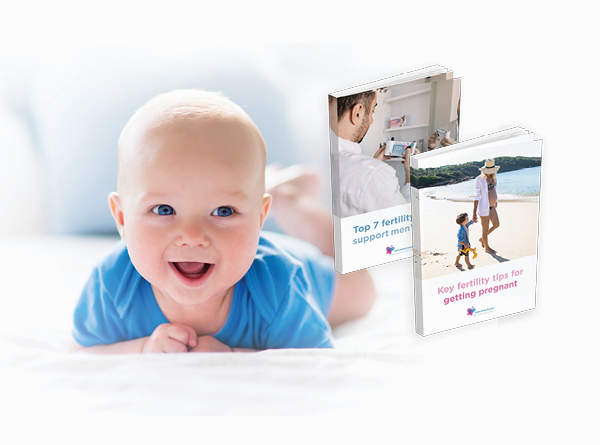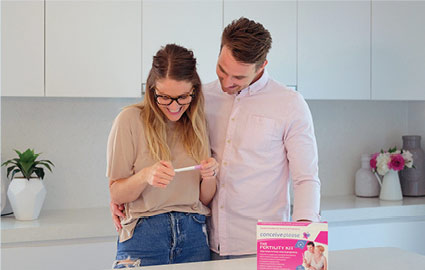Knowledge and timing is everything when you are trying to fall pregnant
When you and your partner have decided to start trying for a baby, it is important to take the time to learn about your reproductive cycle, reproductive health and your most fertile time.
Monitor your ovulation
In order to pinpoint your fertile window, you need to be aware of the length of your menstrual cycle. The average length of menstruation is 28 days. Ovulation occurs as part of the female menstrual cycle and involves the release of an egg from the ovary into the fallopian tube, and this is the time when conception is possible.
For most women, ovulation occurs around the midpoint of the menstrual cycle. This does differ slightly from individual to individual, and for each individual, their menstrual cycle can differ from month to month. This variability can cause woman to miss their fertile window entirely for the month.
Once the egg is released from the ovary and is travelling through the fallopian tube, there needs to be an adequate quantity of good quality sperm with strong swimming capabilities present, to fertilise the egg.
The female egg can survive for 12-24 hours, whilst the sperm can survive in the fallopian tube and uterus for up to three days. Therefore, getting your timing right is crucial.
Know your fertile time
Predicting your window of fertility using guesswork can often be hit and miss and distressing.
Monitoring your ovulation is the best way to determine when you are most fertile and allows for accurately timing sexual intercourse to coincide with your most fertile time.
Ovulation is triggered by a surge of luteinising hormone (LH) released from the pituitary gland. This surge occurs 24 – 36 hours before ovulation and the best method for predicting ovulation is a urine analysis. Clinical studies have shown that women with more awareness of their fertile days have an increased chance of falling pregnant.1, 2
Other methods to monitor your ovulation
There are also other methods to monitor your ovulation. These include:
Measuring your basal body temperature:
Recording your daily basal body temperature can help determine when you are most fertile. The basal body temperature is measured first thing in the morning and is the lowest recorded body temperature for a 24-hour period.
Method: Commencing from the first day of your menstruation, measure your temperature daily using a digital thermometer and an ovulation chart to plot the recordings.
The conceiveplease™ Fertility Kit contains a high-speed digital thermometer and a conceiveplease™ Fertility Calendar plus the One Step LH Urine Ovulation Test all with easy instructions to help you track and pinpoint your ovulation.
Ovulation symptoms:
For some women, ovulation can be predicted by observing signs, symptoms and changes that are experienced at various points throughout the menstrual cycle.
These include;
- Changes in cervical secretions
- Mid cycle ovulation pain (officially known as mittelschmerz)
- A heightened sense of smell and taste
- Increased libido
- Larger, tender breasts, fluid retention, bloating and acne (all related to increased progesterone hormone released by the ovaries)
References:
1. Wilcox AJ, et al. Timing of sexual intercourse in relation to ovulation. New England Journal of Medicine,Vol 333, 1517-1521
2. WHO Task Force on Methods for Determination of the Fertile Period. Temporal relationships between ovulation and defined changes in the concentration of plasma estradiol-17, luteinising hormone, follicle stimulating hormone and progesterone. Am J Obstet Gynaecol 1980;138: 383-390
Your pregnancy journey
Preparing for pregnancy
A good preconception plan to educate yourself about your fertility cycle and implementing recommended lifestyle changes optimises your chances of conceiving naturally.
Monitoring ovulation
In order to pinpoint your fertile window, you need to be aware of the length of your menstrual cycle. The average length of menstruation is 28 days.
During pregnancy
The female body will evolve dramatically within this time and there are many nutritional and lifestyle changes that will be necessary to meet the needs of a growing healthy foetus.
Download your FREE e-books for top fertility tips to help you get pregnant





